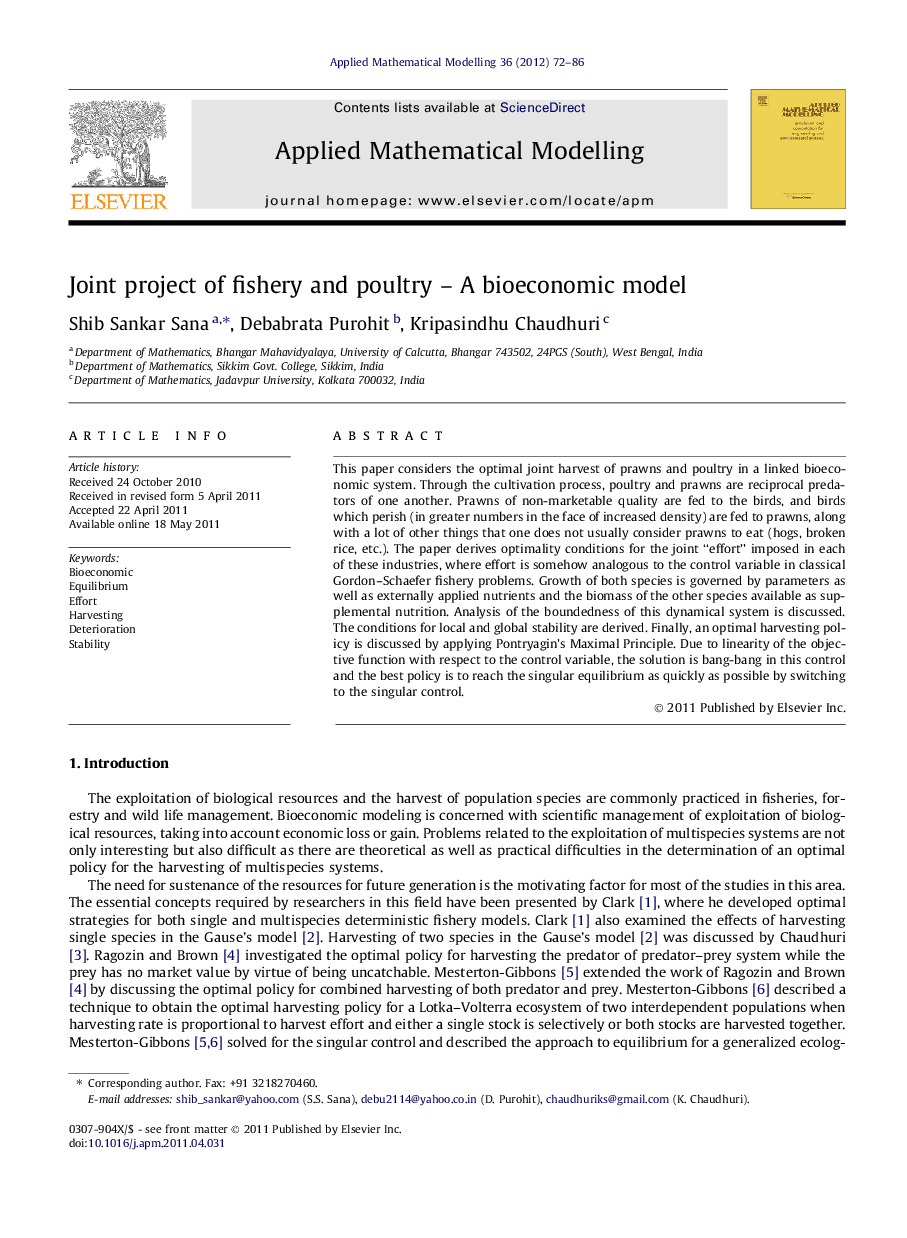| Article ID | Journal | Published Year | Pages | File Type |
|---|---|---|---|---|
| 1706029 | Applied Mathematical Modelling | 2012 | 15 Pages |
This paper considers the optimal joint harvest of prawns and poultry in a linked bioeconomic system. Through the cultivation process, poultry and prawns are reciprocal predators of one another. Prawns of non-marketable quality are fed to the birds, and birds which perish (in greater numbers in the face of increased density) are fed to prawns, along with a lot of other things that one does not usually consider prawns to eat (hogs, broken rice, etc.). The paper derives optimality conditions for the joint “effort” imposed in each of these industries, where effort is somehow analogous to the control variable in classical Gordon–Schaefer fishery problems. Growth of both species is governed by parameters as well as externally applied nutrients and the biomass of the other species available as supplemental nutrition. Analysis of the boundedness of this dynamical system is discussed. The conditions for local and global stability are derived. Finally, an optimal harvesting policy is discussed by applying Pontryagin’s Maximal Principle. Due to linearity of the objective function with respect to the control variable, the solution is bang-bang in this control and the best policy is to reach the singular equilibrium as quickly as possible by switching to the singular control.
